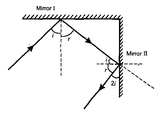Class 10 Chapter Reflection and Refraction
Natural Phenomena: Class 10 Reflection of light by mirror and lens, Images formed by spherical mirrors, centre of curvature, principal axis, principal focus, focal length, Derivation of mirror formula, magnification, Refraction, Laws of refraction, refractive index, Refraction of light by spherical lens, Image formed by spherical lenses, Lens formula, Derivation, Power of a lens
The first theory of light was put forward by Newton. This theory treats light as a particle called corpuscle. We can say that light propagates as a wave and is emitted and absorbed as a particle. One may regard light as having dual nature.


